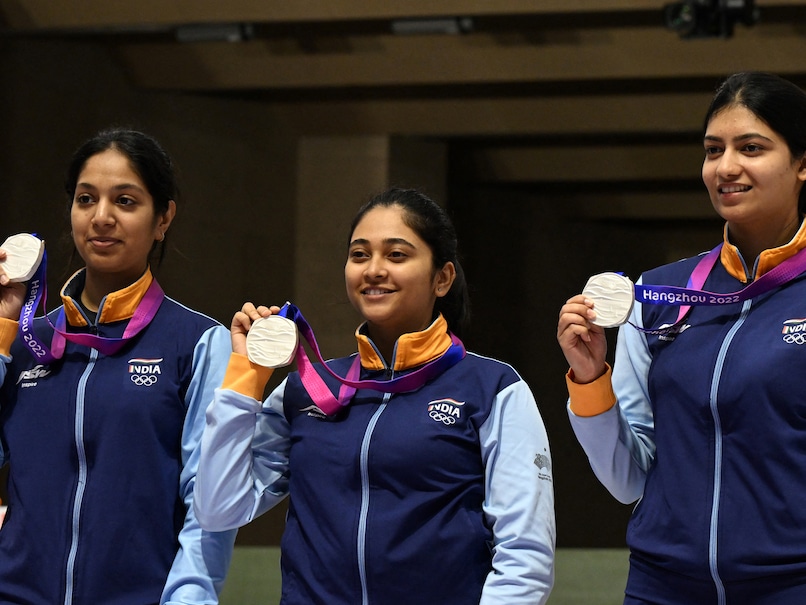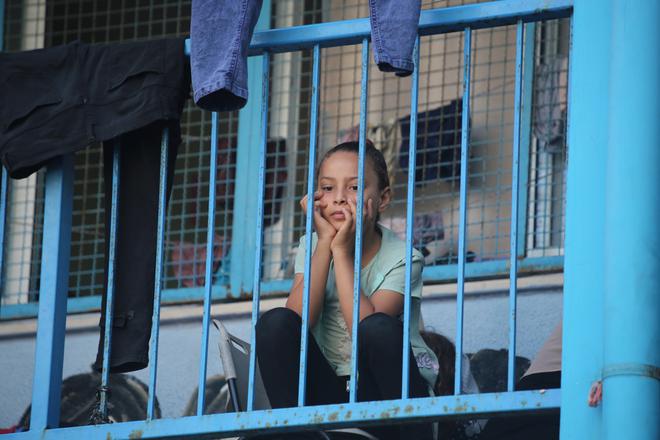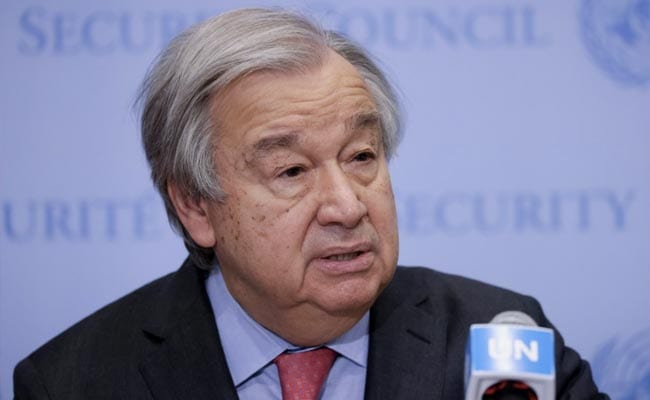In mid-August, India witnessed one of the most extensive multilateral air exercises hosted by the Indian Air Force (IAF) called Tarang Shakti (Phase I). It was the first instance of the German Luftwaffe (German Air Force) doing sorties in Indian skies. Towards the end, IAF Air Chief Marshal V. R. Chaudhari announced this would become a biennial event.
Speaking to the press in India, German Luftwaffe Inspector General Lieutenant Ingo Gerhartz said that Tarang Shakti was not meant to be against any particular country but rather an exercise among partner countries.
“Tarang Shakti was the fifth tryout for Pacific Skies 24. We have flown around 1.3 million flying kilometres. In the last two months, we have flown so many flight hours that one German organisation would fly in an entire year,” noted Gen. Gerhartz. Pacific Skies 24 is the largest-ever air exercise held jointly by France, Germany, and Spain to note its presence in the Indo-Pacific region.
Regarding military and defence partnerships, Russia has been India’s go-to country, being its top supplier for decades. Over the years, the U.S. and France have increased their defence partnerships with India to be among the top three suppliers. Despite being in the top five arms suppliers globally, Germany has no significant presence when it comes to supplying to India.
Back in 2006, Indian and German Defence Ministries had signed an agreement on deeper security and defence cooperation, which included training of military personnel, increased technology transfer, and collaboration in joint defence projects. During the Indo-German intergovernmental consultations in 2019, the two countries decided to further deepen bilateral defence ties, with Germany working towards facilitating the export of military equipment with India.
“If you look at the global defence market, Russia used to be number 2, but in the low-price segment, they were very dominant. Defence equipment from NATO and Israel is rather expensive. The only other country that can replace Russia in the low-cost segment is China – from an Indian perspective, it is not a good way to go,” said Dr. Adrian Haack, Director of Konrad Adenauer Foundation’s India office. Mr. Haack was present at the Sulur Air Force Station in Tamil Nadu in August to witness Tarang Shakti phase 1. According to him, a large part of the exercise was the presence of Gen. Gerhartz himself, who flew the Eurofighter and had an easygoing attitude towards everyone else.
“Gen. Gerhartz always wore the pilot’s jacket with the General’s rank sign and not his General’s uniform. It was an informal diplomatic way in which the General behaved to show that Germany comes as a friend,” said Mr. Haack.
Germany-India defence partnership
Regarding defence equipment imported by India, Russia leads the charts, followed by France, the U.S., Israel, and South Korea. Germany does not even figure in the top countries and therein lies the opportunity. However, given the Russia-Ukraine war, Russia’s industrial capacity is focused on making weapons for the war.
“Germany was quite late in engaging India’s defence interests. To be frank, Germany just woke up, as compared to the U.S. and France, who have way more advanced defence cooperation than Germany,” said Mr. Haack, noting that Germany is merely copying the U.S.’s and France’s strategy to woo India in the defence sector.
Prof. Harsh Pant, Vice President, Studies and Foreign Policy, at the Observer Research Foundation said, “The strategic picture has shifted completely, and there is a debate about Germany being forced to become a more involved player in the defence and security sector. Given the Indo-German relations, India could establish a long-term defence partnership.”
German defence manufacturers have been present in India. For instance, ThyssenKrupp Marine Systems (TKMS) and Mazagon Dock Shipbuilders Ltd. (MDL) signed an MoU in 2023 for the local construction of submarines for the Indian Navy. They have not only worked for the modernisation of the Indian submarine INS Shankush but have also jointly bid for the $4.8 billion Project 75 (India) programme for the construction of diesel submarines. While TKMS would be responsible for the submarine design, engineering, and consultancy, MDL would manage the construction and delivery to the Indian Navy.
“The submarine cooperation between India and Germany is great, allowing Germany to be a defence partner in a crucial, high-tech weapons system. This is a good step and a strong commitment from the German side. From the Indian perspective, it also shows that, on the one hand, they want to be more self-reliant but also replace their older systems with more advanced systems. They are not buying the cheapest submarine but investing in expensive and advanced systems. The same is the case with the Air Force with Rafale, for example,” said Mr. Haack.
Technology transfer is one of the major pre-conditions for defence partnerships as India also focuses on manufacturing defence equipment domestically. According to Mr. Pant, the technology transfer precondition could be a roadblock to high-end technology transfer but that is a concern for the future.
“Countries that are more pragmatic in this regard will benefit. The U.S., for instance, has changed its response, and they are pushing for more technology transfer. Without tech transfer, the defence partnerships with India will be constrained. But in the case of Germany, as the defence partnership is just starting to take shape, it should not be as big of an issue. It depends on how high up the pecking order the technology transfer requirement is,” said Mr. Pant.
Experts note that India has been exposed to Russian and Western defence technologies and platforms.
“If you have many West-based vendors, then interoperability is not an issue. It only becomes a problem when we use Russian and Western systems together,” said Mr. Pant.
“If you look at Germany, there is the Eurofighter and the Tornado, and the Tornado is being replaced by the F35 by Lockheed Martin. At any moment, there will be two fighter jets in service. If you look at France, they have Rafale and Mirage. But India has way more models. The Indian Army may be slightly different regarding platforms. Still, the Indian Airforce and Navy are very diverse, so it should not be a problem if India gets weapons with German/European systems,” said Mr. Haack.
German interest in the Indo-Pacific region
China’s aggressive policies in the waters of the Indo-Pacific have been a concern for many countries in the region. The German Bundeswehr (armed forces) notes: “By building artificial islands, for instance, in the South China Sea, China has established military bases outside its national territory, thus provoking conflicts over sea routes, natural resources, and fishing rights. This poses a threat to peace in the region and to the security of international shipping and trade routes.” The Indo-Pacific region is home to nine of the ten largest ports in the world.
According to Mr. Haack, while Germany has clear political positions regarding China, it has a substantial economic trading volume with China, which puts Germany in a tricky situation.
“Germany has a great interest in free shipping routes and preserving peace and stability in the region. That is why we are now more engaged in security policy,” according to the German government release.
“Regarding the Indo-Pacific region, (Germany’s presence in the waters) is a political sign. Since there is no rule of law on open waters, the presence of ships is always a sign that you are willing to implement rules,” said Mr. Haack.
Mr. Pant believes German interest in the Indo-Pacific region is partly due to Europe’s changing worldview and the shift in the balance of power in that region. Around 60% of the world’s economic output is generated within the Indo-Pacific region, which could have a direct impact on the economic interests of export nations like Germany.
“After the Russia-Ukraine war and Russia and China’s close cooperation, there is a sense that the behavioural patterns of Europe could be replicated in Asia-Pacific. The centre of gravity is shifting to the Indo-Pacific region, and Europe wants to be a geopolitical actor here. Germany, the largest economy in Europe, will also have to do more heavy lifting,” said Mr. Pant.
The German Navy is also expected to navigate India’s west coast with the German frigate Bayern for a joint exercise, which was also conducted in 2019.
“The optics for Germany are important – projecting their interests in making it clear to the Chinese that Germany will play an important role in the Indo-Pacific. They also aim at creating a sense that Germany is willing to increase its regional security presence,” said Mr. Pant.
(Nimish Sawant is an independent journalist based in Berlin)
Published – September 11, 2024 06:00 am IST










